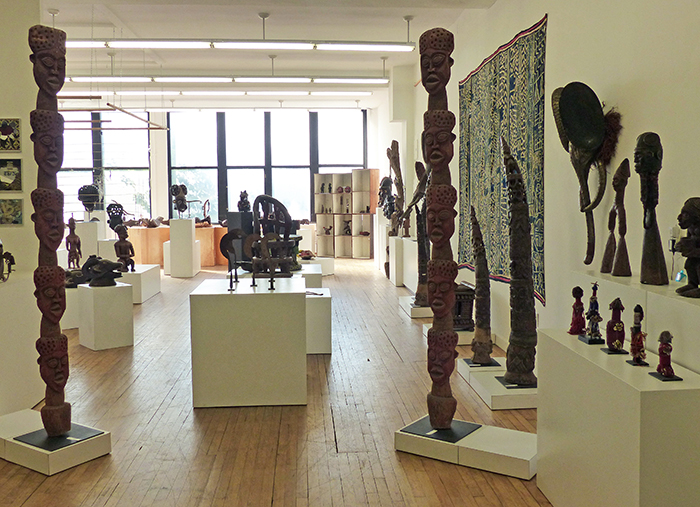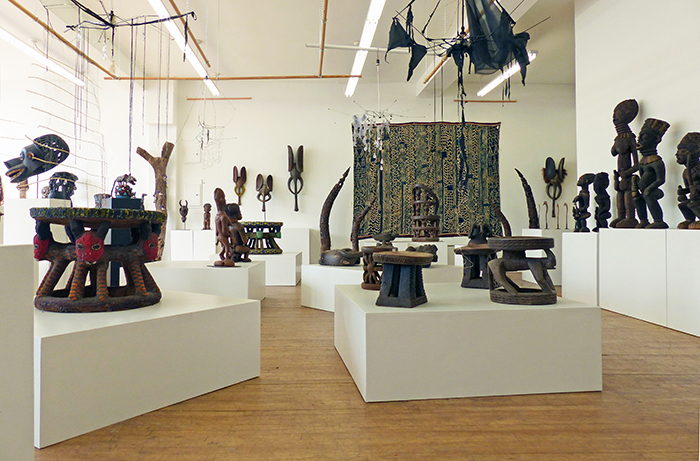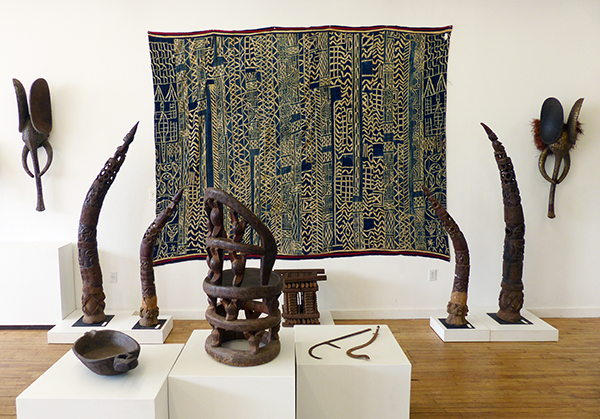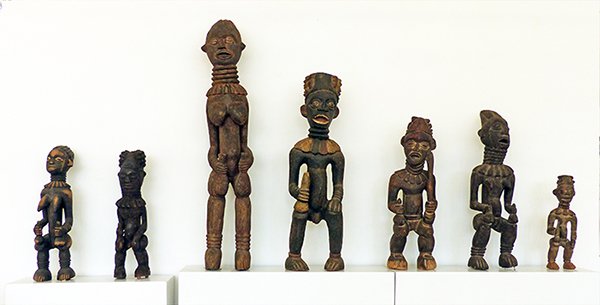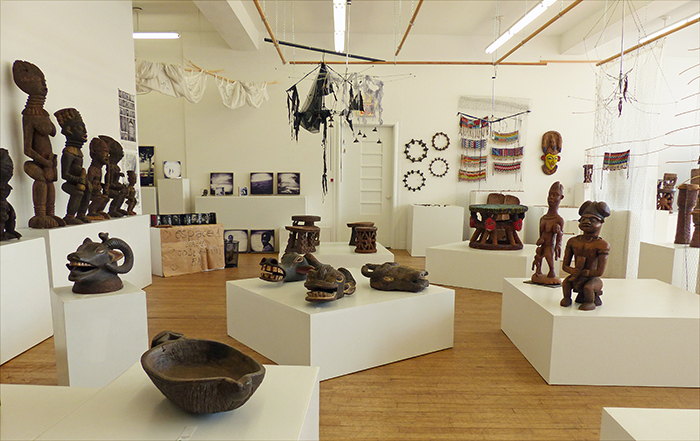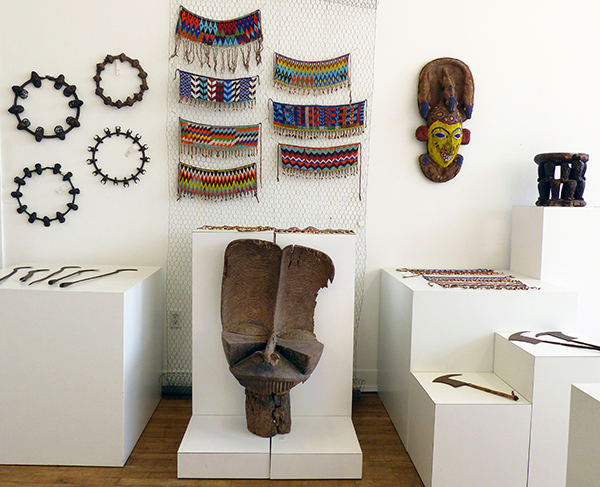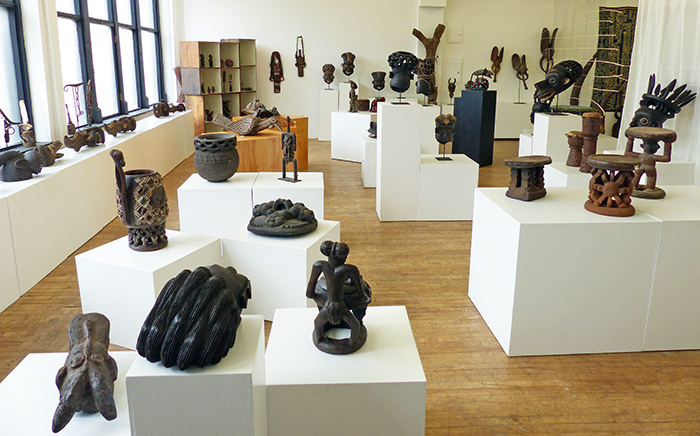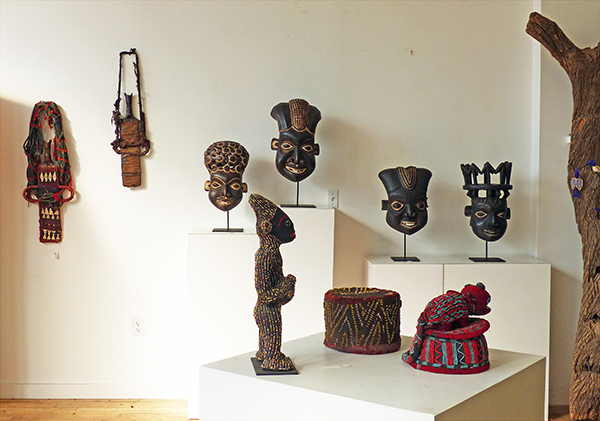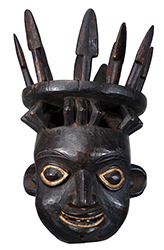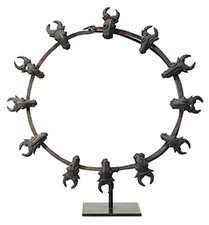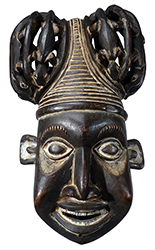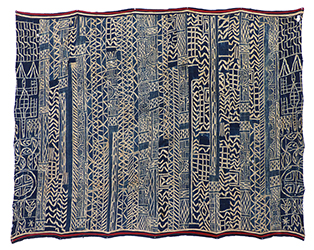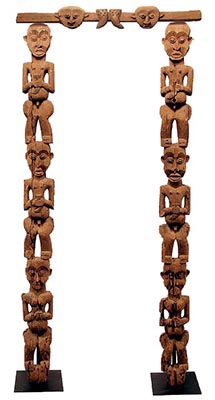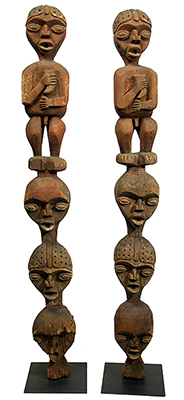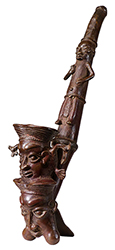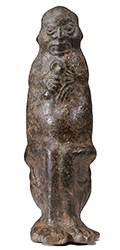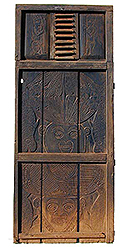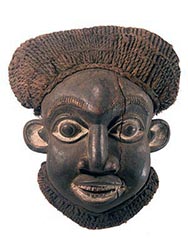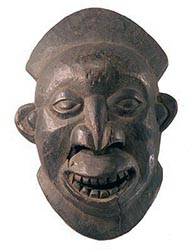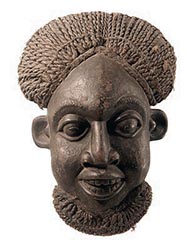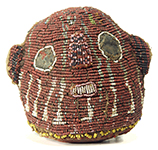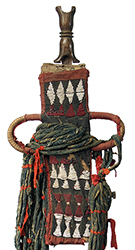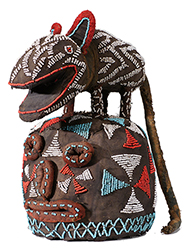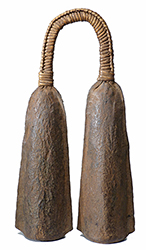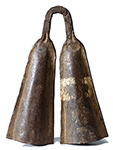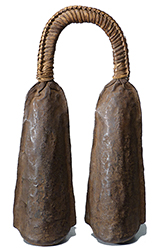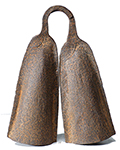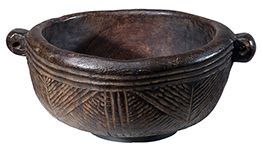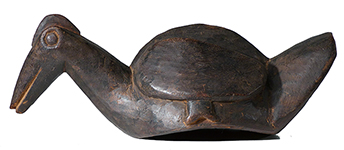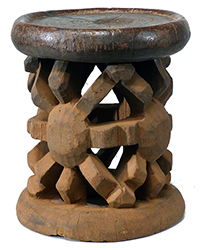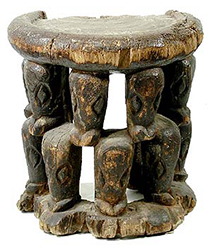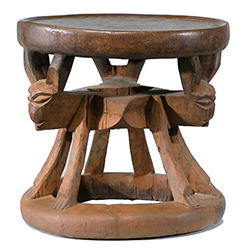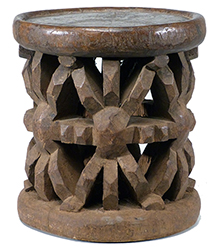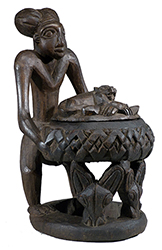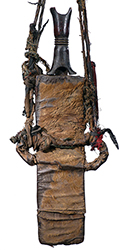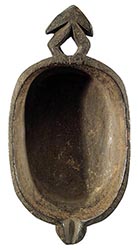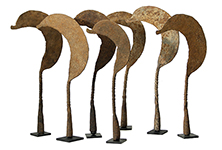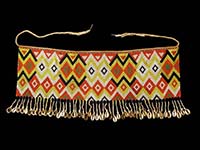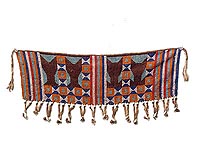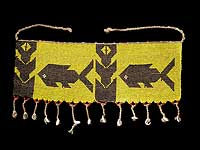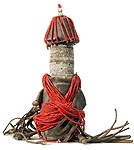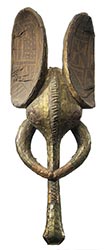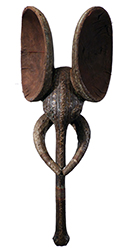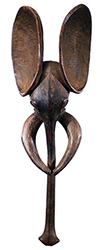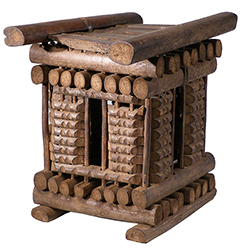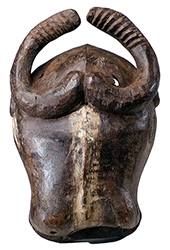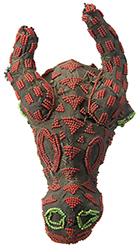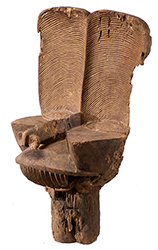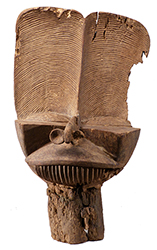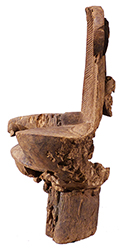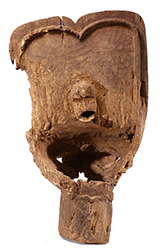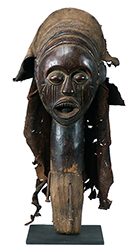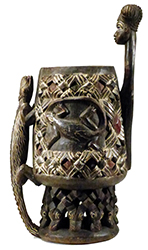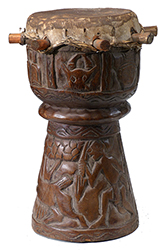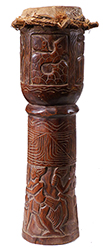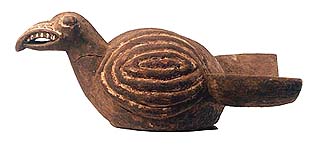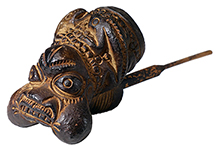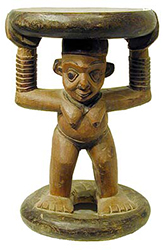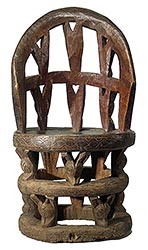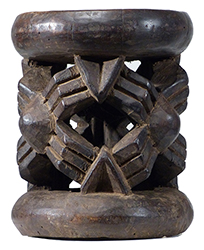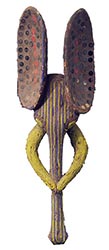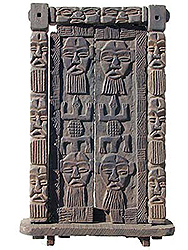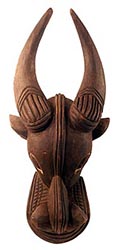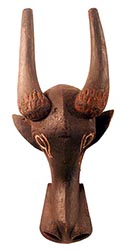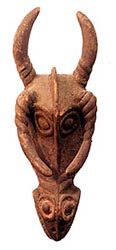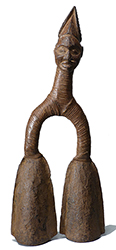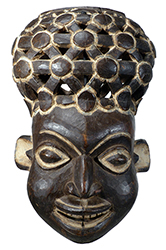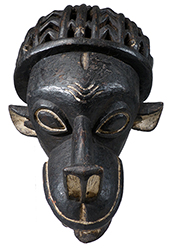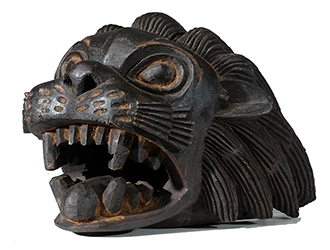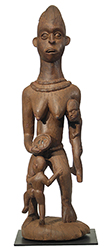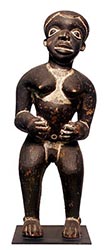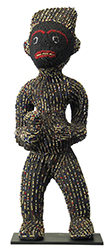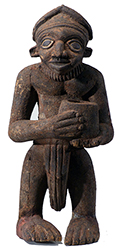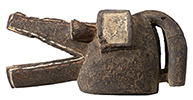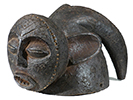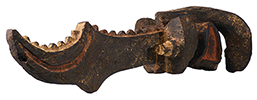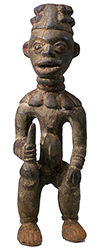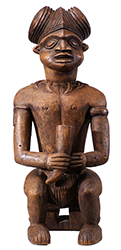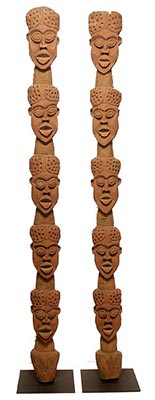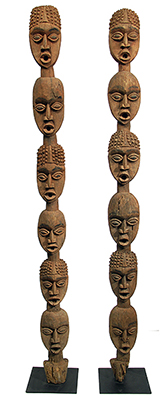iCAMEROON
AUGUST 13 - OCTOBER 8, 2016
Scroll down for installation photos followed by links to the individual pieces and groups.
Located on the west coast of central Africa, this country is nicknamed "Africa in Miniature" for being the cradle of many distinct ethnic groups and languages. This mosaic of people was formed primarily of four large groups --- the Bantu and the Pygmys coming from the south and the Sudanese and Berbers coming from the north --- all of whom contributed to the enrichment of a cultural patrimony that gave birth to the art of Cameroon. Various traditions emerged from a variety of places but the región of the northwest called Grasslands or Grassfields remains a recognized artistic center where cultural traditions continue to flourish. The purpose of traditional Cameroon art is to perpetuate local rites and customs and if it were to be described, I'd say that it is a sculptural art that is at once expressive, monumental and dynamic. In this exhibit, we have chosen to present objects from the Grassfields area (of the Bamileke, Bamun and Tikar peoples) as the region has been able to maintain artistic traditions thanks to the relentless support of local kings, called "Fon" and secret societies dedicated to ancestral values. This art is primarily destined to satisfy the needs of the royal court for whose members sculptors créate ceremonial masks, commemorative figures, ritual objects and architectural elements --- for use in the palaces --- all of which are designed to confirm the power of the Fon. Since elements of palatial architecture constitute a particularly strong artistic tradition from this region, our exhibition focuses on Hamill Gallery's collection of architectural posts which were created by local artisans for use by those who commissioned them. Those posts exhibit marks of use and erosion; their authenticity is not in doubt; the style is local and dates from the first half of the 20th century. We have classified posts showing little or no signs of use as having been made for the market more than thirty years ago. Additional objects included in the exhibition are the stools of Bamileke dignitaries (the majority of which are authentic) and Kom masks (several of which have indications of use). Although few of these pieces can claim significant age, we have chosen them because they reflect the evolution of a culture. Edith Mbella, Edith Mbella Tribal Art www.edithmbella.com |
Below are some installation photos followed by links to the individual pieces and groups.
